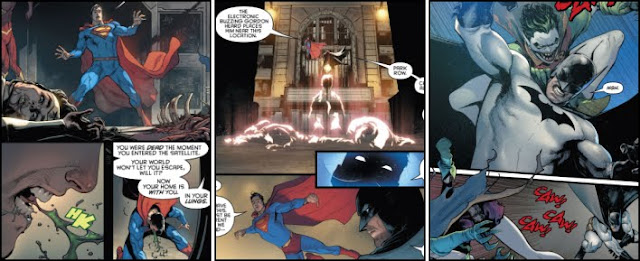 |
| DOCTOR WHO: THE THIRTEENTH DOCTOR No. 10, August 2019 |
Admittedly, the Corsair’s impressive ability to give half a dozen of the galaxies more interesting-looking extra-terrestrials a taste of her sword-fighting prowess is undoubtedly the highlight of this publication, especially when it is depicted within the confines of a scintillating splash page dynamically pencilled by Roberta Ingranata. But this pulse-pounding fencing display would debatably have been even more enjoyable if the Doctor wasn’t just quietly standing on the side-lines with her three rather docile assistants impotently watching on, and was instead fighting alongside her fellow time traveller brandishing a blade with all the aplomb of actor Tom Baker in “The Masque of Mandragora”; “I thought I was the fun one…”
Lamentably, all Houser persistently pens for the Doctor to do is maddeningly moan, discouragingly preach and tediously admonish every action-packed moment which takes place within this comic, and such unlikeable toxicity quickly turns the so-called “charismatic and confident explorer, dedicated to seeing all the wonders of the universe” into an unrecognisable kill-joy who drearily spouts unnecessarily sarcastic comments about her fellow Time Lord at every opportunity. To make matters worse though, the American author then seemingly ‘ramps up’ this venomous portrayal of the Thirteenth incarnation once the ‘gang’ retreat into the TARDIS, by going so far as to have her angrily rebuke the Corsair for stealing “something called the gem of Niag from the planet Devivian” when they’re both stood in the Type 40 time and space machine the Doctor herself stole from Gallifrey…
 |
| The regular cover art of "DOCTOR WHO: THE THIRTEENTH DOCTOR" No. 10 by Giorgia Sposito |
































